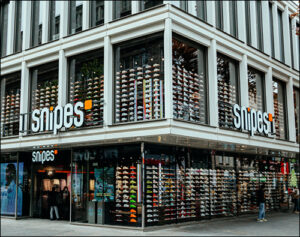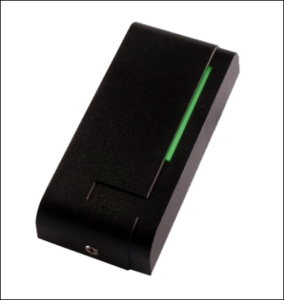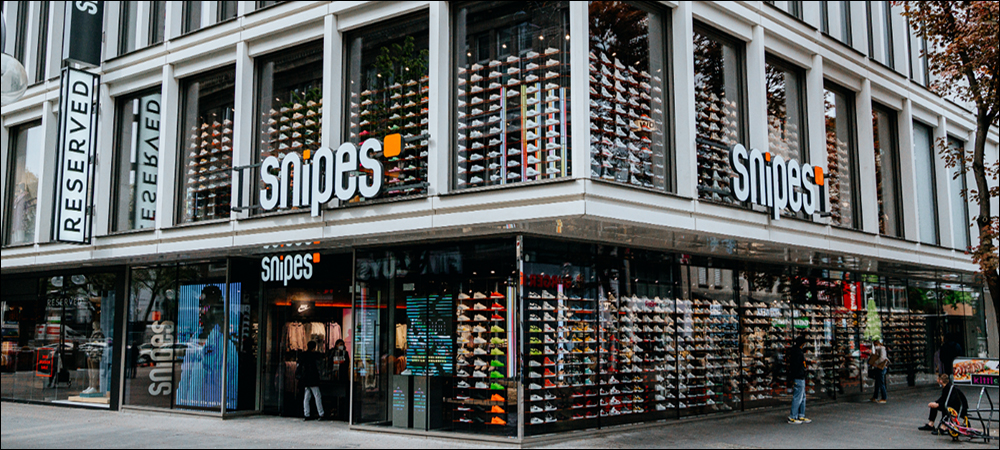- STMicroelectronics, Thales Partner on NFC Security
- Snipes Selects Nedap for Footwear RFID Project
- iDTronic Intros New NFC RFID Reader
- Semtech, Exeger Team Up on IoT Solar Harvesting
- Blueiot Technology Joins Industry IoT Consortium
- Soracom Connects Five Million IoT Devices
- Mouser, Menlo Micro Sign Distribution Agreement
Presented here are recent news announcements in the radio frequency identification and Internet of Things industries.
STMicroelectronics, Thales Partner on NFC Security for Google Phones
Semiconductor provider STMicroelectronics has announced that its ST54K IC is handling control and security for contactless Near Field Communication (NFC) communication in the newly launched Google Pixel 7 smartphone. According to the company, the device combines NFC control and a certified secure element in a single chip. With proprietary technologies designed to enhance NFC contactless sensitivity, the ST54K was selected to provide reliable connectivity and contactless transaction security.
 For the Pixel 7, ST has combined the ST54K with a mobile secure operating system from Thales. The OS meets security industry standards and supports convergence of the embedded SIM (eSIM) with other secure NFC applications into the ST54K secure element. “Google chose the ST54K for its excellent performance, low power and robust security that meets the highest CC EAL5+ assurance,” said Marie-France Li-Saï Florentin, the VP of STMicroelectronics’ Microcontrollers & Digital ICs Group, in a prepared statement. “As a result, it ensures the best possible user experience and protection for contactless transactions.”
For the Pixel 7, ST has combined the ST54K with a mobile secure operating system from Thales. The OS meets security industry standards and supports convergence of the embedded SIM (eSIM) with other secure NFC applications into the ST54K secure element. “Google chose the ST54K for its excellent performance, low power and robust security that meets the highest CC EAL5+ assurance,” said Marie-France Li-Saï Florentin, the VP of STMicroelectronics’ Microcontrollers & Digital ICs Group, in a prepared statement. “As a result, it ensures the best possible user experience and protection for contactless transactions.”
The solution, intended to offer reliable and high-performing contactless functionality in Android handsets, is available to original equipment manufacturers, and it enables the Pixel 7 to support the Car Connectivity Consortium‘s Digital Car Key Phase 3 specification. The handset thus provides the functionality required for users to safely digitalize their car key into the phone, the company reports.
“The combination of ST’s ST54K with our secure OS and personalization capabilities provides a certified and evolutive solution for smartphones to support diverse digital services,” added Emmanuel Unguran, Thales’ SVP for mobile connectivity solutions, in the prepared statement. “These include embedded SIM for instant connectivity, and digital wallet services, such as transit ticketing and digital car keys. It is also the first in the Android ecosystem to support the eSIM multiple enabled profiles.”
Snipes Selects Nedap for Footwear RFID Project
Nedap, a provider of RFID solutions, has announced a partnership with Snipes, a sneaker and streetwear retailer that stocks global brands such as Nike. Snipes’ partnership with Nedap began in Germany earlier this year. All German stores, equivalent to nearly half of all Snipes stores throughout Europe, are expected to deploy Nedap’s iD Cloud system before the end of this year, with the remaining stores added before mid-2023.
 The partnership will support Snipes in implementing omnichannel services such as “buy online, ship from store.” Stock accuracy is anticipated to lead to higher merchandise availability across all sales channels, the company reports, while also improving the shopping experience. The business case for the RFID project was made with Nike and Levi’s products, which come source-tagged. Snipes’ own brands are currently being added to the project.
The partnership will support Snipes in implementing omnichannel services such as “buy online, ship from store.” Stock accuracy is anticipated to lead to higher merchandise availability across all sales channels, the company reports, while also improving the shopping experience. The business case for the RFID project was made with Nike and Levi’s products, which come source-tagged. Snipes’ own brands are currently being added to the project.
“In order to further consolidate our omnichannel approach, it is essential to provide our community with the products they want, regardless of the channel they choose to use,” said Daniel Bontjer, Snipes’ head of retail for Europe, in a prepared statement. “Nedap appeared to be the only vendor in the market that was able to strip away complexity from RFID projects. RFID is a great technology, and the possibilities are countless. Instead of wanting to do everything at once, we focused on improving stock accuracy, in-store refill, and DC-to-store replenishment.”
Bontjer added, “Having that stock accuracy baseline now opens the door to our digital channels. We can now lower our safety thresholds with a high degree of confidence, as we know that products in stores are also available to be sold online. Nedap’s pragmatic approach and understandable solution made a substantial impact immediately. Defining clear milestones makes it easier to implement RFID and paves the way to scale up when we are ready.”
Arjan Pruiksma, Nedap’s business solution expert, said in the statement: “By partnering with Nedap and our KPI-driven approach, Snipes successfully improved merchandise availability across stores. iD Cloud allows retailers to refill the sales floor based on real-time RFID inventory data. As a result, Snipes no longer needs to overproduce, have high safety thresholds, or have conservative forecasting to ensure item availability. This partnership is a great example of our iD Cloud platform making stores more efficient. In addition, its user-friendly operation is perfect for daily use.”
iDTronic Intros New NFC RFID Reader
iDTronic has announced its HF | NFC Access Reader NEO, designed to provide reliable hardware and firmware options for integrated Internet of Things (IoT) solutions. The reader supports more than 95 percent of currently available HF and NFC transponders, the company reports, with reading ranges of up to 5 centimeters (2 inches), depending on tag orientation and transponder type.
 An integrated LED indicator shows the successful detection of RFID transponders. Using an RS485- MODBUS or USB interface, data is securely transmitted to the host system. An integrated RFID antenna enables the reader to interrogate a range of transponders in the HF and NFC frequency range 13.56 MHz. The device supports HF transponders compliant with the ISO/IEC 14443A/B and ISO 15693 standards, and it can read and write to tags with MIFARE Classic, DESFire and other transponder types.
An integrated LED indicator shows the successful detection of RFID transponders. Using an RS485- MODBUS or USB interface, data is securely transmitted to the host system. An integrated RFID antenna enables the reader to interrogate a range of transponders in the HF and NFC frequency range 13.56 MHz. The device supports HF transponders compliant with the ISO/IEC 14443A/B and ISO 15693 standards, and it can read and write to tags with MIFARE Classic, DESFire and other transponder types.
“Nowadays, user identification represents a significant safety factor at all production facilities or machines,” the company said in a prepared statement. “RFID technology plays a special role here, as it is versatile and can be easily integrated into existing access systems. The systems and access authorizations can be easily expanded by connecting additional RFID readers to the production machines. This is mostly done by directly connecting the devices to existing PLC systems. In the field of Industry 4.0, this not only results in higher reliability in the area of employee identification, it also reduces the downtime of the individual machines and there are fewer operator errors on the systems.”
The reader provides a hardware solution for RFID cards or transponders that can supplement existing systems with machine authentication, iDTronic explains. Alternatively, the company offers a panel reader for interrogating RFID key fobs on systems and machines. The reader features a configuration tool for the development of controller-, Linux- or Windows-based applications. In addition to documentation and command protocols, the company’s software development kit includes a Windows-based demonstration application with functionality across all supported HF RFID standards.
Semtech, Exeger Team Up on IoT Solar Harvesting
Semtech, supplier of analog and mixed-signal semiconductors and algorithms, has collaborated with Exeger, a Swedish deep-technology company providing customizable solar cells. By combining Semtech’s LoRa Edge asset-management platform with Exeger’s Powerfoyle solar cell technology, the companies hope to extend the battery life of asset-tracking and environmental-sensing devices.
LoRa Edge scans GNSS satellites and Wi-Fi service set identifiers (SSIDs), and it partitions the processing between IoT devices and the LoRa cloud to determine location. The cloud-based solver reduces power consumption and increases battery life, according to the company. Exeger’s Powerfoyle system can be integrated into any electronics device; the solar cell technology converts all forms of light to charge and power devices with clean, endless energy.
“Coupling the benefits of Powerfoyle with the ultra-low power capabilities of Semtech’s LoRa devices will provide IoT applications with an extended or even unlimited battery life,” said Oscar Hemberg, Exeger’s chief product integration officer, in a prepared statement. “Together, we move one step closer to energy independence through more sustainable products powered with clean, endless energy.”
The patented Powerfoyle material can be integrated into IoT sensors with Semtech’s LoRa Edge chip-to-cloud platform, the companies explain, thereby providing environmentally friendly platforms for the IoT industry. The combined technologies are expected to spur new solar-powered tracking applications for geolocation use cases, including indoor and outdoor asset tracking, global supply chain logistics, agriculture, smart utilities and smart cities.
“LoRa devices enable smart IoT applications that help solve some of the biggest challenges facing our planet,” added Marc Pégulu, the VP and general manager of Semtech’s Wireless and Sensing Products Group, in the prepared statement. “Semtech and Exeger’s collaboration will enable manufacturers to develop IoT devices leveraging new energy harvesting technology for a smarter and more sustainable future.”
Blueiot Technology Joins Industry IoT Consortium
Real-time location system (RTLS) provider Blueiot Technology has announced its membership in the Industry IoT Consortium (IIC), a global not-for-profit partnership of industry, government and academia created to accelerate the adoption of a trustworthy Internet of Things. “We are delighted to welcome Blueiot to the Industry IoT Consortium,” said Stephen Mellor, the consortium’s CTO, in a prepared statement. “Their knowledge and experience with Bluetooth in various industries will help our members as we work to help businesses all over the world with digital transformation.”
“Since its founding, the IIC has helped build the technical foundation for the Industrial IoT and assisted its members in adopting IoT technologies to fulfill their business potential in IT, manufacturing, energy, healthcare, utilities and other sectors,” added Rayson Zhao, Blueiot’s CEO, in the prepared statement. “We are honored and excited to be part of the IIC for more growth opportunities, and look forward to communicating with industry experts and joining hands with other members to promote the transformation of industries, organizations and society in the Internet of Things era.”
Blueiot mass-produces Bluetooth angle-of-arrival (AoA) positioning products, and it has completed projects in various global scenarios, including in manufacturing, healthcare, logistics, warehousing, retail and smart cities. The company hopes that joining the IIC will enable it to “help the world’s ten billion Bluetooth terminals to enjoy a more accurate location experience and empower more industries.”
Soracom Connects Five Million IoT Devices
Soracom, a provider of IoT connectivity solutions, has announced that it is now keeping more than five million IoT devices connected around the globe. The rapid growth—up from the four million announced in January 2022—is being driven by a strong uptake of IoT devices in energy, oil and gas, payments, point-of-sale, healthcare, consumer electronics and agriculture, among other industries, Soracom reports. The firm provides IoT connectivity solutions to developers, as well as small to midsize companies, to help them accelerate IoT deployment, minimize risk and ensure scalable rollouts.
The company offers commitment-free, pay-per-use connectivity services featuring speed to market, cloud-native integration and secure bootstrapping capabilities. Soracom announced its first one million IoT connections in June 2019. Since then, the use of its platform has expanded with accelerating adoption across industries and geographies. Soracom’s IoT connectivity platform is device-, cloud- and bearer-agnostic, the firm reports, enabling users to reliably connect devices to their preferred cloud with complete network control from anywhere around the world.
“Soracom’s powerful horizontal IoT platform makes IoT accessible to a growing number of partners, industries and applications,” said Kenta Yasukawa, Soracom’s cofounder and CTO, in a prepared statement. “As a technology and business partner, we help customers in virtually every vertical offload heavy lifting to the cloud on terms that make sense for IoT. As we reach this milestone, we’re truly humbled by the ways Soracom customers and partners around the world are building new connected experiences.”
Pocketalk offers a handheld, two-way translation device featuring a large touchscreen, noise-cancelling microphones, a text-to-translate camera, and the ability to help people connect across 82 different languages. The company uses Soracom to keep consumer, business, municipal and professional customers connected to the cloud. “With nearly one million connected devices sold worldwide, Pocketalk needs much more from a partner than just a connectivity contract,” said Joe Miller, Pocketalk’s general manager, in the statement. “From our first device to our third generation, Soracom has supported our growth with everything from eSIM provisioning to local breakout capability to IoT architecture consultation. We look forward to working together for a long time to come.”
Mouser, Menlo Micro Sign Distribution Agreement
Mouser Electronics has announced a distribution agreement with Menlo Micro, a manufacturer of electronic switches for RF, microwave, millimeter wave and AC/DC power solutions. Under the agreement, Mouser will stock Menlo Micro’s Ideal Switch products. The MEMS-based switching devices are designed withstand extreme temperatures, the company reports, and can handle thousands of watts. The devices are suitable for test and measurement, medical, electric vehicle chargers, smart switches and plugs, IoT, computing, switch matrix, wireless infrastructure, 5G networks and other applications.
The Menlo Micro product line now available from Mouser includes the MM5600 double-pole, double-throw differential switch, which can operate up to 40 gigabits per second for digital signaling applications or RF applications up to 20 GHz. The device offers two separate single-ended ports and a 90 percent reduction in size compared with comparable electromechanical relay solutions, the company reports.
Mouser will also stock the MM5120, DC–18 GHz single-pole, four-throw switch, which offers ultra-low insertion loss, greater than 25 watts of power handling at 6.0 GHz, and high linearity. The MM5120 integrates a high-voltage charge pump into a 5.2-millimeter by 4.2-millimeter (0.2-inch by 1.7-inch) LGA package, eliminating the need for external components and simplifying design layouts.
The MM5130 high-power SP4T RF switch provides ultra-low insertion loss and linearity as an SP4T from DC to 18 GHz, the company reports, and more than three billion switching cycles. The switch can be configured in Super-Port mode, which extends the frequency operation to 26 GHz. The MM5140, meanwhile, is a high-power, DC–6 GHz RF SP4T switch that integrates a charge pump/driver circuit with flexible SPI and GPIO interface controls.
The MM5140 performs with low loss while maintaining a high level of input IP3 performance over wide temperature ranges, with an operating lifetime of greater than three billion switching cycles. The MM5140 is suitable for replacing large RF electromechanical relays, as well as RF/microwave solid-state switches in applications for which reliability and performance are critical.


